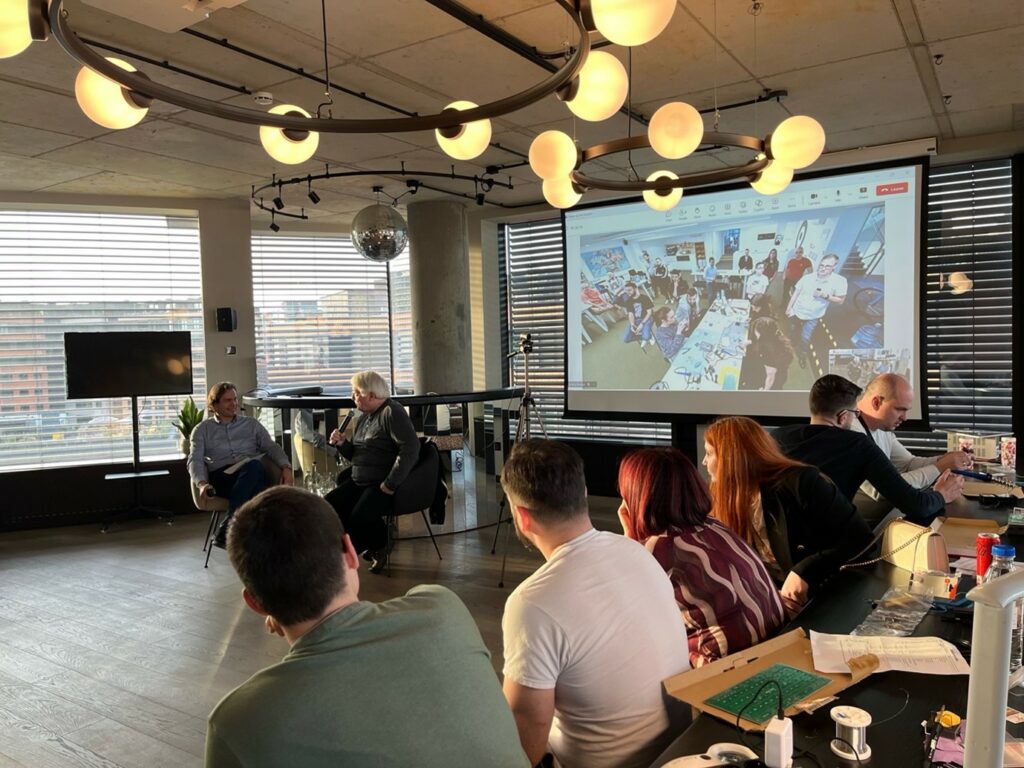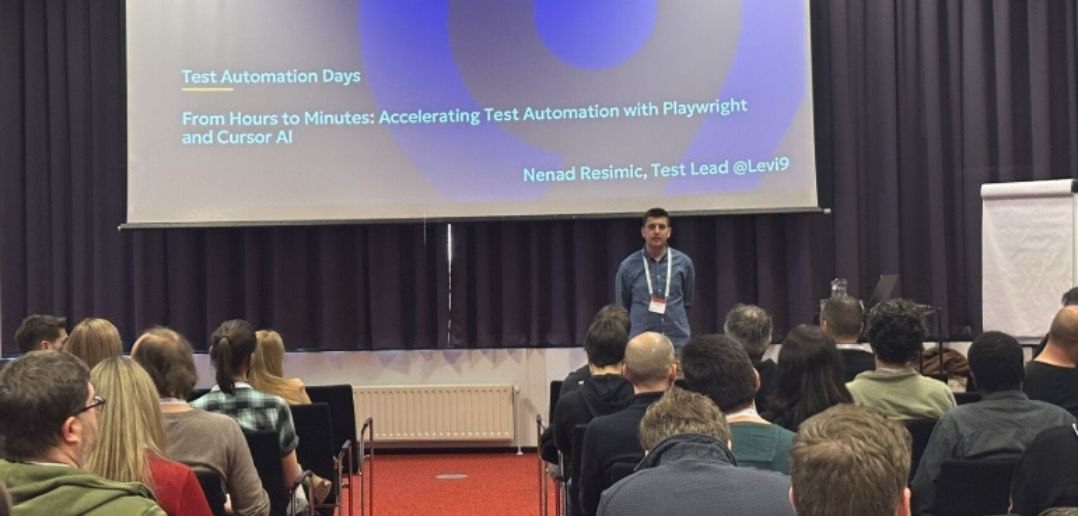At Levi9, creativity is nurtured every day, and sometimes, it takes us on a journey through time. During a special Happy Hour event called Build Your Galaxy DIY Workshop, employees had the chance to take a glimpse into the past and revive one of the first Yugoslavian computers – the legendary Galaxy.
This computer, designed by Voja Antonić, gained massive popularity in the 1980s, with over 10,000 people building their own.
To celebrate its 40th anniversary, a new version of Galaksija has been developed—fully compatible with the original but adapted to today’s technology. Levi9 employees had the unique task of assembling their own Galaksija in 2024, following detailed instructions and guidance.
The special guest of the event in Belgrade was none other than the creator himself, who shared insights into Galaksija’s origin, its impact on the tech community, and its lasting inspiration, even four decades later. Colleagues from DC NSZR joined Belgraders online, during the talk. Event was hosted by levi niners Jan Dolinaj in Belgrade and Viktor Toman in Novi Sad.
Inspirational Talk with Galaxy Creator
“For me, it’s a huge advantage—when you assemble a computer yourself, it’s a completely different experience than just buying one. You build an emotional connection with it, you understand the technology in a different way, and you develop an interest not just in how it works, but in how it’s built. I believe many of today’s engineers and experts started their journey this way,” said Voja Antonić in a conversation with Jan Dolinaj, Country Manager and CTO of Levi9.
Jan himself is proof of this, recalling how he was introduced to Galaksija in elementary school by his Technical Education teacher.
The Galaksija computer, published in the magazine Computers in Your Home in 1984, had only 4 KB of memory. Yet, its accessibility and DIY nature allowed thousands of enthusiasts across Yugoslavia to take their first steps into programming and hardware experimentation.
“Back then, people were interested in building their own hardware, and today, that curiosity is even stronger. The same goes for old computers… The new Galaksija you’re assembling has found its way to enthusiasts worldwide—from Italy, Poland, and Romania to Russia and the USA. A real community of retro-computer lovers and hackers has emerged, constantly improving it,” Antonić explained.
When asked by Jan about how he sees today’s technological landscape, Voja responded:
“The technological renaissance that started around 2000 is still ongoing. Everything is well-defined now. There are hardware hackers with amazing projects, and a DIY culture has flourished, originating from the West. I’m lucky to be right in the middle of it, in California, where I live and work. People there are creating incredible things, surpassing me in many areas—as they should. We, the older generation, must let them push forward.”

Hands-on Experience
After an inspiring talk, levi niners started building Galaksija computers themselves. Happy Hour became an opportunity for collaboration, exploration of tech history, and, of course, fun.
Voja also shared a valuable piece of advice for those passionate about technology and innovation:
“There are no shortcuts. You have to start your own project, dive in, and just keep swimming—there’s no other way. That’s the only way to truly learn. Beyond simply acquiring knowledge, it’s about developing creativity. Problem-solving isn’t just mechanical; it’s about figuring out how to approach a problem, from what angle, and how to come up with a solution. You can only develop that skill through real, hands-on experience and hard work. Actually, I wouldn’t call it hard work—it’s a pleasure. That’s the best way to learn.”
Just as Galaksija inspired a new generation of programmers and engineers 40 years ago, Levi9 continues to foster a spirit of creativity and innovation. Interestingly, one of the meeting rooms in Belgrade office is named after it. In case you visit our office, you will remember this story.

More about Galaxy
Back in the 1980s, in Yugoslavia, things weren’t all sunshine and roses for tech enthusiasts. Western IT equipment, that was gaining attention wasn’t easily accessible, either due to import procedures or high prices. Galaksija changed everything.
The home computer Galaksija (Galaxy in Serbian) was designed by Vojislav Voja Antonić and released as a DIY in late 1983. Voja, a self-taught Serbian electronics engineer, writer, and journalist, and the editor of the popular scientific magazine Galaksija, from which the computer got its name. The magazine’s special edition “Computers in Your Home” was a platform for publishing complete documentation, design, schematics, and instructions with an audience.
The computer was based on the Zilog Z80 microprocessor and had 8 KB of RAM. Users could expand its capabilities by adding peripherals and interfacing with other devices. It featured a built-in BASIC interpreter, allowing users to write and run their own programs.
Galaksija was known for its simplicity, low cost, and accessibility. As this was a DIY project, there are no exact figures on the number of Galaksijas made. There were estimated to be over 10,000 units, while over 100,000 people bought a Galaksija magazine special edition. The price of the components was around 4,500 Yugoslav dinars (YUD) or approximately 100 German marks (DM).
Galaksija became a phenomenon in Yugoslavia, significantly contributing to the cultivation of the DIY culture and serving as the initial introduction to the field of information technology for numerous young individuals.
To mark Galaksija’s 40th anniversary, a reprint of the original edition of the magazine was released, and Voja made a new Galaksija, which is fully compatible with the original but adapted to modern times. It can be connected to modern monitors and powered by a mobile phone charger, and programs and data are no longer stored on cassette tapes but on internal flash memory.
Voja’s original Galaksija is exhibited in the world’s most significant computer museum, the Computer History Museum in Mountain View, California under catalogue number 102766415.
In this article:






